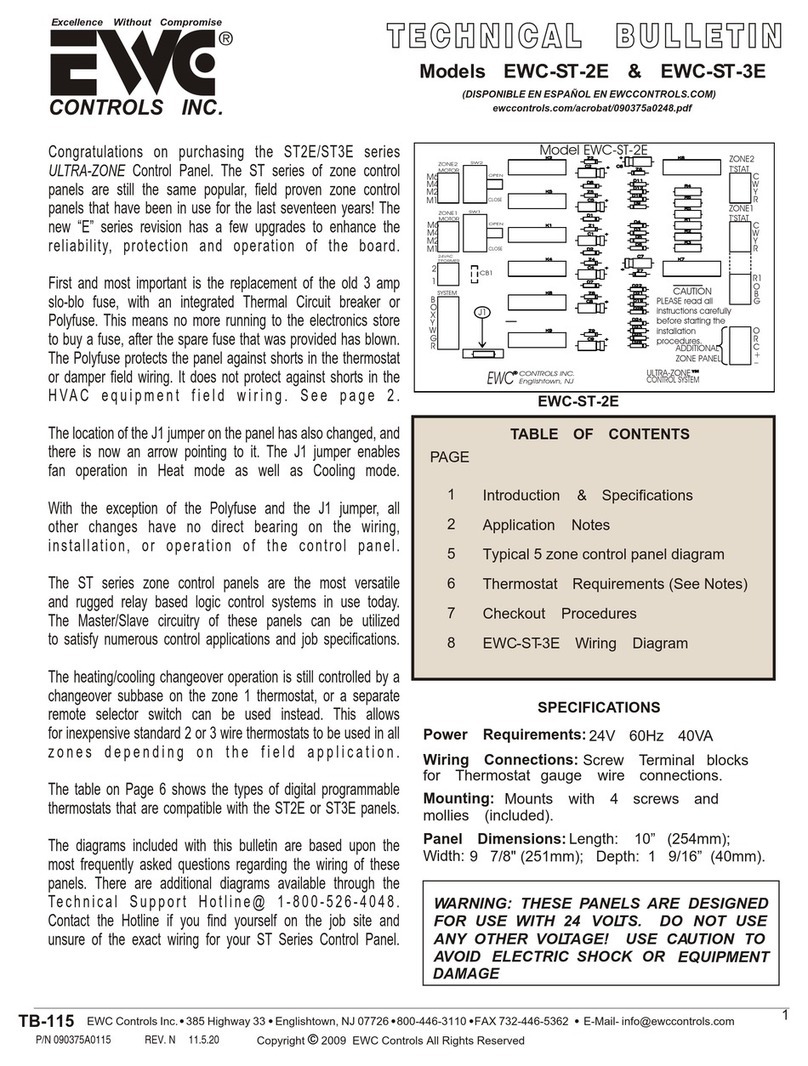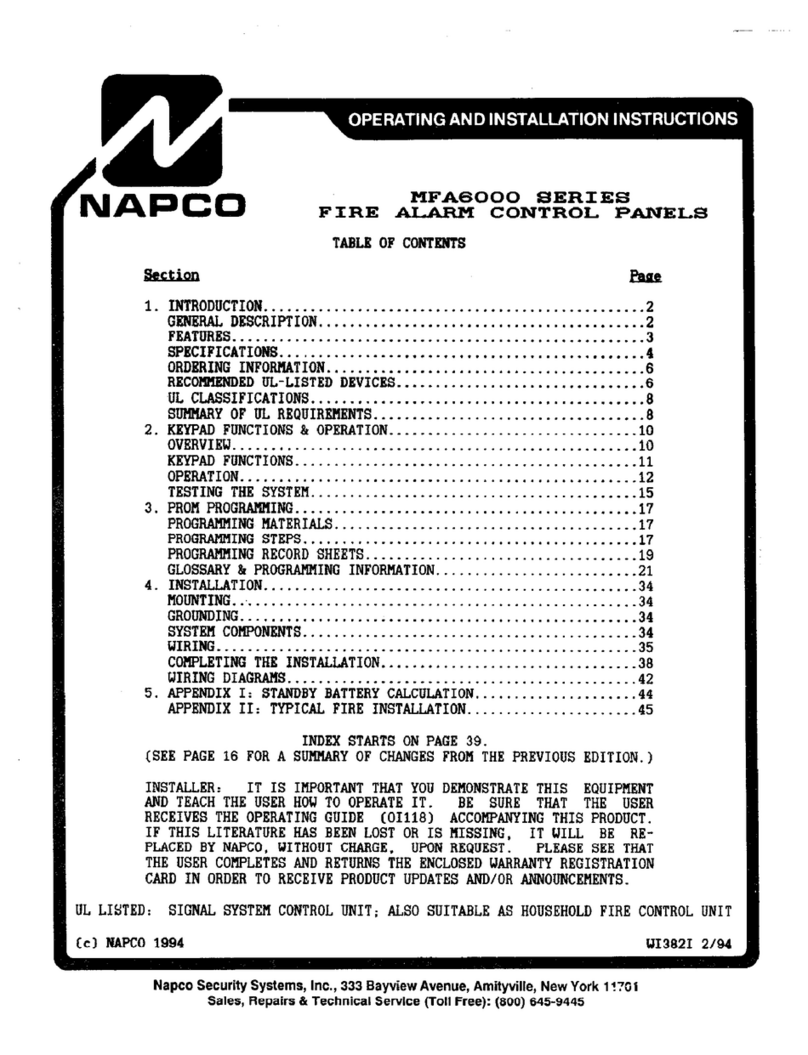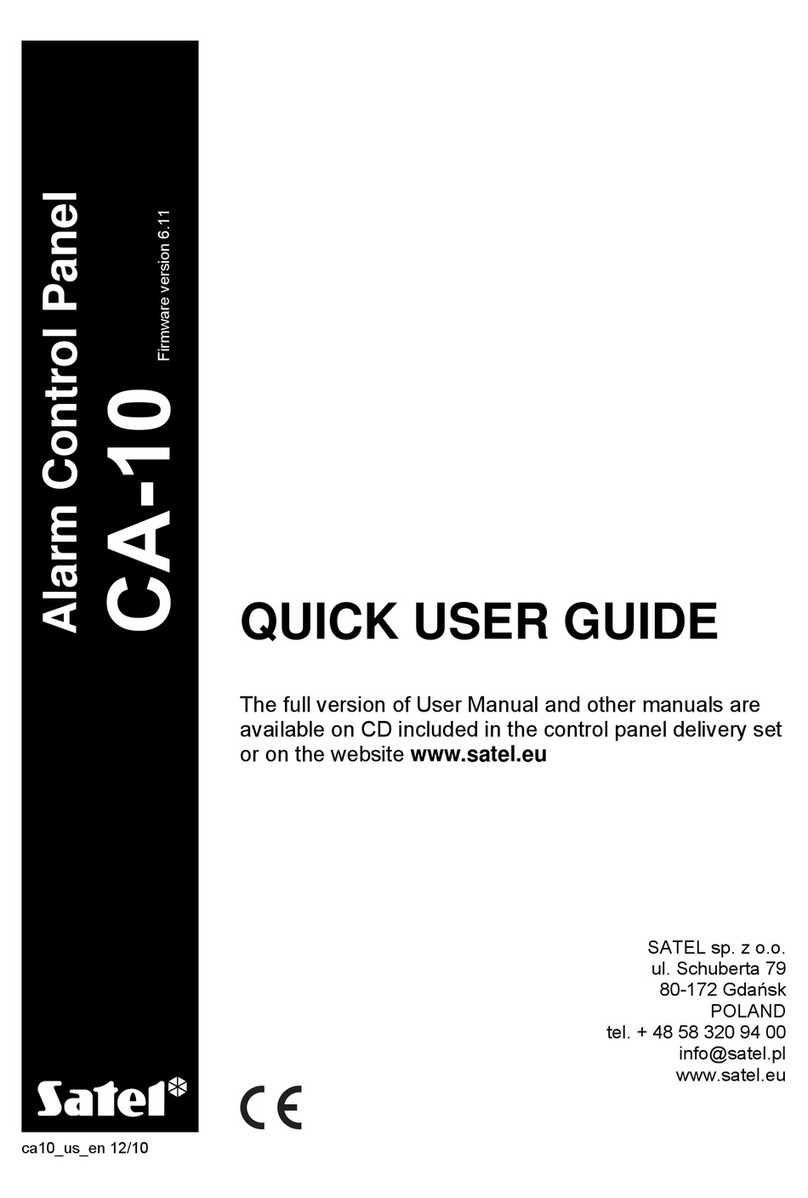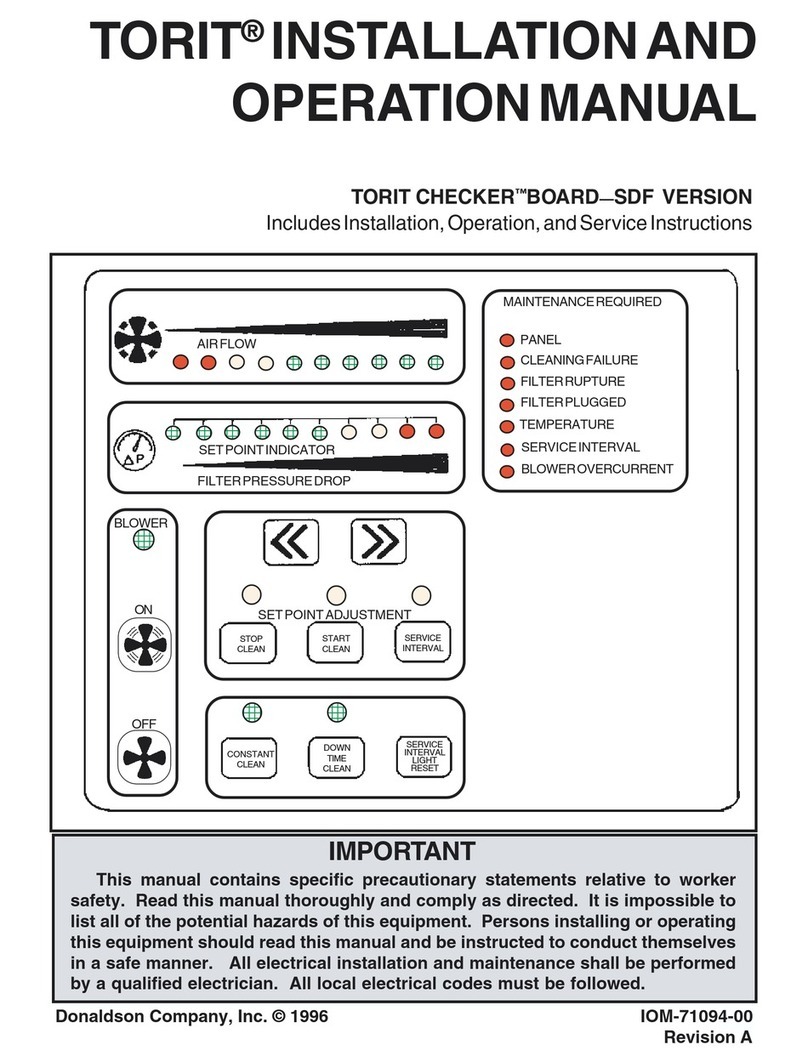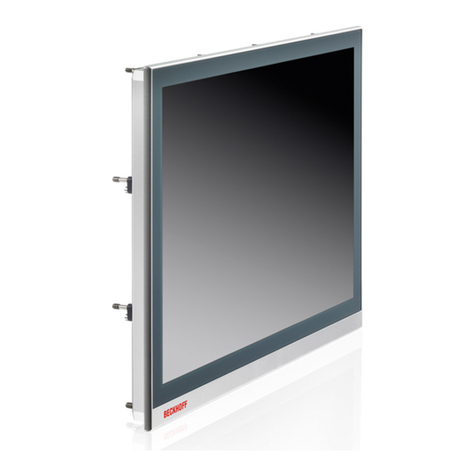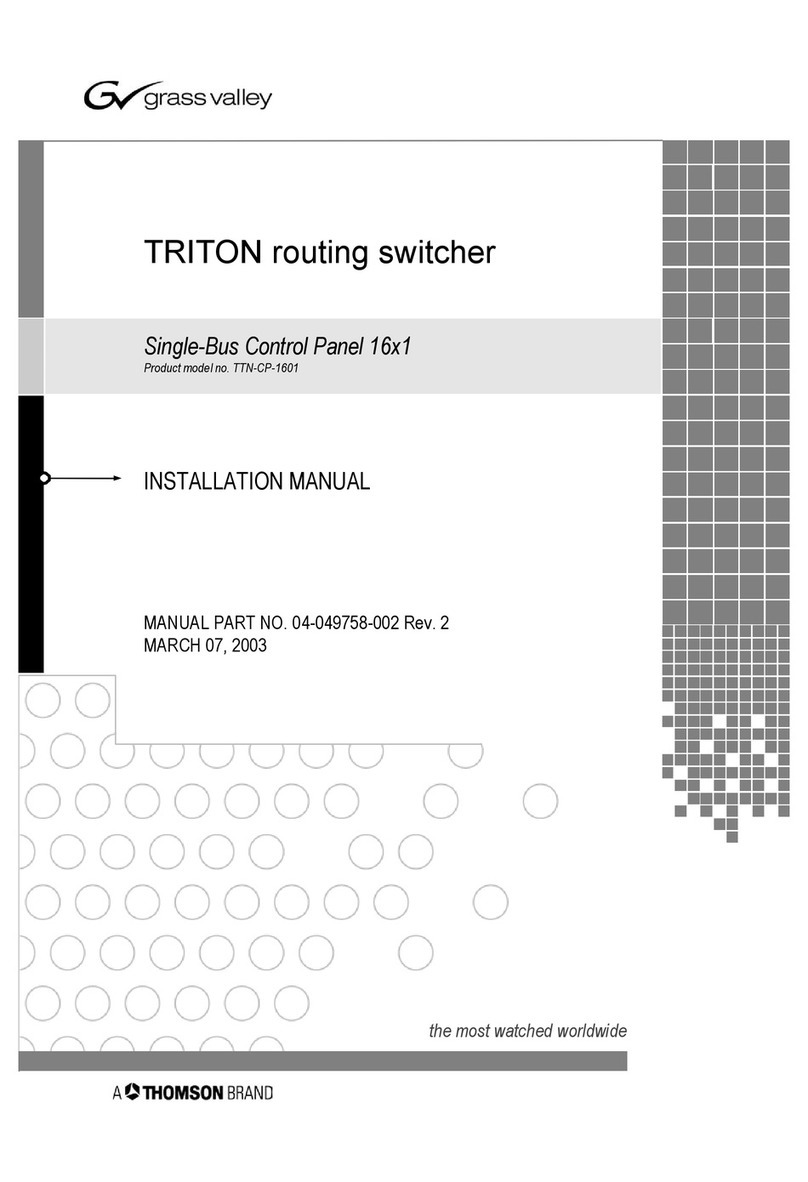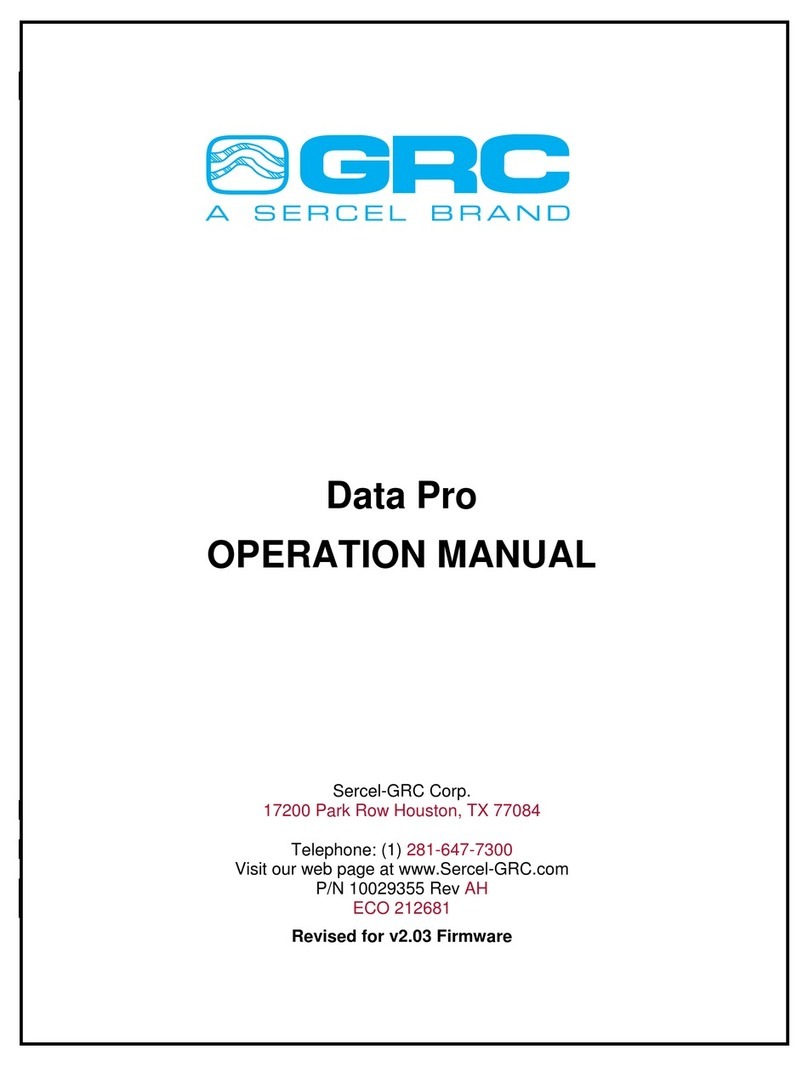Fire Pro 08451 User manual

Fire Detection and Activation System
Model 08451
Rev 3.1
Page | 1
Contents
1Introduction 2
2Components List 3
3Design Considerations 4
4Installation of FirePro Generators 6
5Connection of Multiple FirePro Generators 7
6Installation 8
7Wiring Diagram 11
8Programming 12
9Control Panel Indicators & Operation 12
10 Commissioning and Test Procedure 14
11 Servicing and Maintenance 16
12 Troubleshooting 17
13 RFI Environments 18
14 Safety Data Sheet (SDS) - FirePro 18
15 Vehicle and Mobile Plant Installation Notes (AS5062) 19
16 Specifications 20

Fire Detection and Activation System
Model 08451
Rev 3.1
Page | 2
1Introduction
1.1 General Information
The FirePro FP-08451 Fire Control Panel is a combined detection and extinguishant system is
compliant for vehicle and mobile plant installations (AS5062).
The FIP (fire indicator panel) incorporates:
-2x Detection circuits;
-1x Extinguishing Discharge circuit;
-1x Siren/Strobe circuit;
-1x Agent Release Notification circuit;
-Programmable Activation (automatic and/or manual);
-Fault Monitoring system;
-Isolation Function.
How Does it Work
All FirePro Fire Extinguishing Aerosol Generators use the latest generation FPC solid compound.
Upon activation, the solid compound is transformed into a rapidly expanding, highly efficient gas,
based on Potassium salts. It does not deplete oxygen levels. Its built-in fail-safe activation system
ensures operation of the generators when required, even if everything else fails. The FirePro
Aerosol Generators have a certified life of 15 years, with minimal maintenance required.
Ozone Depletion Potential (O.D.P.) = 0
Atmospheric Life Time (A.L.T.) = 0
Global Warming Potential (G.W.P.) = 0
Non-corrosive & Non-toxic
1.2 In Case of Fire
If a fire occurs, equipment operators should do the following:
1. Detection will initiate an alarm condition on the FirePro System
2. The siren/strobe will operate and if shutdown relays have been installed, equipment
shutdown will be initiated.
3. Evacuate all personnel from the risk area and alert the Fire Brigade.
4. Close all hatches and openings, and shutdown engines and any extraction fans or vents.
5. Manual Activation: Press and hold both mode switches continuously for 5 seconds to
activate the system.
6. Automatic Activation: The control panel will automatically begin the activation sequence
when fire has been detected on Circuit 1 Alarm.
7. Keep the FirePro suppression gas within the risk until the fire is extinguished and not able to
re-ignite.
8. Do not start engine or fans until the fire is extinguished. Operating the exhaust fans will
enable the gas to escape the risk area and could allow the fire to re-ignite.
9. Do not enter the risk until it has been rendered safe.
10.Recommended clean up after discharge is with soapy water or cleaning agent based on citric
acid.
11.Following a discharge, replace all installed FirePro Generators and Thermal Fuse Couplings.

Fire Detection and Activation System
Model 08451
Rev 3.1
Page | 3
2Components List
FP-CP-08451
Fire Control Panel
Detection and extinguishant
control system
2x DP-3000
4x DP-2000
2x FP-08950
1x
1x
1x
Deutsch Plug 3 Pin M/F, c/w heatshrink
Deutsch Plug 3 Pin M/F, c/w heatshrink
End-of-line Plug 27kΩ ½W (Detection)
End-of-line Diode 1N4004 (Siren/Strobe)
End-of-Line Resistor 3k3Ω ½W (Discharge)
Operator’s Manual
Agent Release Circuit
Siren / Strobe Circuit
FP-08825
Thermal Fuse Coupling
See 3.2 Agent Released
FP-08940
Siren/Strobe
Discharge Circuit
FirePro Aerosol
Generator
100g –500g Unit.
Constructed from Stainless Steel.
Comes with installed Deutsch Plug for
easy install
FP-6200
Heavy Duty Bracket 316 SS.
Suits FP-100, 200, 500 FirePro Aerosol
Generators.
FirePro Aerosol Generator
1200g –5700g Unit.
Constructed from Stainless Steel.
Comes with installed Deutsch Plug for
easy install.
FP-6100
Heavy Duty Bracket 316 SS.
Suits FP-1200, 2000, 3000 5700 FirePro
Aerosol Generators.
Detection Circuit (Circuit 1 Alarm & Circuit 2 Alarm)
FP-08920
Marine Grade Thermal Detector 60°C
Fixed. Other temperatures available on
request.
FP-14053
Manual Actuator
Internal OR External
FP-9510
Linear Heat Detection Cable 182° C
Supplied in Cut Lengths with Deutsch Plugs for easy install. Lengths: 1,2,4,6 & 8m
Installation Components
Service Components
FP-09500
2 Hour Fire Rated Shielded Cable.
FP-08960
Signage for the System. A sheet of
different size labels.
FP-08919
Wiring loom and Splitter Cable for
installaion of multiple FirePro generators.
FP-08800
FirePro Simulator –for Testing &
Commissioning.
Additional Modules
FP-08850
Discharge Delay Module
Allows additional FirePro generators to be
discharged
FP-08860
Shutdown Relay Module
Provides facility for equipment shutdown
FP-08870/8871/8872
Power Control Module
Provides back up power for control panel.
FP-08879
Voltage Sensitive Relay

Fire Detection and Activation System
Model 08451
Rev 3.1
Page | 4
3Design Considerations
3.1 Power Supply Input
The FP-08451 Fire Control Panel provide a single power supply input that is compatible with 12
/ 24vDC. The main power supply should be connected directly to a battery or power source,
not through a distribution board. The main power must not be interrupted if the
vehicle/equipment is powered down. The FirePro Battery Lead (P/N FP-14016) may be used to
connect power to the control panel. If a secondary power supply is required for an installation,
a Power Control Module will be required.
3.2 Agent Released Input
The Agent Released input provides an indicator to the operator to notify if the suppression
system has been activated. For the indicator to operate, the FP-08825 Thermal Fuse Coupling
must be used. Thermal Fuse Couplings are single use only. If the suppression system has
operated, the thermal fuse coupling must be replaced. If the Agent Release output is not used,
the circuit must be bridged out and sealed using the supplied deutsch plugs.
3.3 Siren/Strobe Output
The recommended siren/strobe is the Banshee Sounder-Strobe. In a typical install, the
maximum number of supported sirens/strobes that can be installed is 5. When installed,
Siren/Strobes are to be clearly visible and audible at all points around the risk area.
The siren/strobe output is a monitored circuit. The supplied end-of-line diode (1N4004) must
be installed on the last siren/strobe in the circuit, otherwise the fire control panel will display a
fault. If a siren/strobe is not used, the supplied end-of-line diode (1N4004) must be connected
to the siren output using the supplied Deutsch plugs.
3.4 Discharge Output
The maximum number of FirePro generators able to be discharged by the FP-08451 Fire Control
Panel is limited by the voltage of the main power supply. That is:
Voltage 12vDC Max = 2 Units
Voltage 24vDC Max = 4 Units
If a risk area requires a greater number of FirePro generators, the FP-08850 Discharge Delay
module must be used. The module will discharge generators in multiples up to the maximum
as above.
If the number of FirePro generators connected to each output is greater than the
maximum, the fire system will not operate.
When multiple FirePro generators are connected to a single output, they must be connected
using the FP-08919 Splitter Lead. If a suppression system is not used, the supplied end-of-line
resistor (3k3Ω) must be connected to the Discharge output using the supplied deutsch plugs.

Fire Detection and Activation System
Model 08451
Rev 3.1
Page | 5
3.5 Circuit 1 Alarm Output
The Circuit 1 Alarm Output is a zoned detection circuit capable of operating up to 30
conventional detectors, 100 metres of linear heat detection cable or 30 manual actuators.
The Circuit 1 Alarm Output can be programmed for detection and alarm, or for automatic
discharge if an alarm is detected on this circuit.
The supplied end-of-line resistor (22k or 27kΩ) must be installed on the last detector or manual
actuator in the circuit, or the fire control panel will display a fault. If detection is not used, the
supplied end-of-line plugs (marked green) must be connected.
3.6 Circuit 2 Alarm Output
The Circuit 2 Alarm Output is a zoned detection circuit capable of operating up to 30
conventional detectors, 100 metres of linear heat detection cable or 30 manual actuators.
The Circuit 2 Alarm Output is a detection and alarm circuit only. When in alarm condition the
siren/strobe will operate, however the suppression system will not discharge until manually
operated. The supplied end-of-line resistor (22kΩ) must be installed on the last detector or
manual actuator in the circuit, or the fire control panel will display a fault. If detection is not
used, the supplied end-of-line plugs (marked green) must be connected.
3.7 Mounting
For correct installation, the Fire Control Panel must be mounted by four bolts or screws through
the mounting holes in the flange on both sides of the Module. No penetrations are to be
made through the casing of the panel.
The Fire Control Panel enclosure is rated IP65, so should be installed in a convenient location,
away from where it may be affected by large amounts of water.
It is necessary to complete all wiring and any programming of the detection mode prior to
mounting the panel.
Dimensions and relevant clearances for installing the FP-08451 Control Panel are below. A
Dash Mount Bracket (P/N FP-08451B) is also available and may be used if the minimum
clearances cannot be met.

Fire Detection and Activation System
Model 08451
Rev 3.1
Page | 6
3.8 Cabling Requirements
Cable Requirements - All cabling in the FirePro
Installation MUST be done using 0.75mm shielded
Fire Rated Cable. Care taken to ensure that all
cables are isolated, and that RF shielding on cable is
stripped back to ensure that there is not accidental
grounding. Cables are colour coded for easy
identification.
Extension Leads - Deutsch Plugs must be used to
ensure water-proof connections are made
throughout the installation.
4Installation of FirePro Generators
FirePro Condensed Aerosol Fire Extinguishing System Arrangement.
•FirePro units and system components installed to allow inspection and maintenance.
•Locate FirePro units where they are not exposed to mechanical damage, exposed to
chemicals, or weather conditions, that may render them inoperative. Protective provisions
shall be adopted, if necessary.
•FirePro units shall be securely installed. Use heavy duty brackets where necessary. Brackets
should be capable of handling the risk environment, including vibration.
FirePro units must be installed at NOT less than the minimum safe distances as
specified in the design calculations.
Means for prompt rescue of any trapped personnel shall be provided, including:
•Adequate aisle ways/routes of exit.
•Alarms –audible and visual, that operate immediately on detection of the fire.
•Signs in accordance with relevant standards for the installation.
System components shall be positioned to the minimum clearances from energized electrical
parts as per: AS 4487 and AS 3000.
Handling and Storage - when handling the Condensed Aerosol Generators do not:
•Disassemble the unit
•Carry out any welding work in the vicinity of the fire
extinguishing system components.
•Exert force or impact which creates physical
or mechanical damage to the casing.
STORAGE and OPERATIONAL CONDITIONS
•Temperature: –54 and +54°C
•Humidity: maximum 98% RH
Colour
Circuit
Red
Power Supply
Yellow 1
Activation
Yellow 2
Activation Delayed
Green 1
Detection 1
Green 2
Detection 2
Blue
Discharge Advice
Orange
Siren/Strobe
White
Relay Output

Fire Detection and Activation System
Model 08451
Rev 3.1
Page | 7
•Service life: 15 years (date of manufacture appears on each generator)
Positioning
CORRECT
FP Units directing the aerosol stream away from opening
INCORRECT
FP units are directing the stream towards the opening.
5Connection of Multiple FirePro Generators
Where multiple FirePro Generators are installed, connect using the
FP-08919 Splitter Lead.
Splitter Leads can be installed at any point on the activation. For
ease of install, servicing and efficient field wiring, Splitter Leads
should be installed in areas easy to access and minimise extension
leads.
The supply voltage of any system will determine the no of FirePro units which can be used
12vDC Max = 2 FP Units
24vDC Max = 4 FP Units
Where additional units are required in the system use Discharge Delay Module(s).

Fire Detection and Activation System
Model 08451
Rev 3.1
Page | 8
6Installation
It is recommended that one circuit is installed and connected at a time to isolate the cause of
any faults that may occur during installation. The supplied End-of-line plugs and Test Module
may be used to keep the control panel out of a fault condition.
1. Power: When panel has been mounted in a suitable location, connect main supply power
using a FP-14016 Battery Lead to the power input (marked red).
2. Agent Released Circuit: The Thermal Fuse Coupling (P/N FP-08825) should be screwed
into the thermal port on one of the installed FirePro generators and connected to the control
panel.
3. Siren/Strobe Circuit: Mount the siren/strobe (P/N FP-08940) in a location where it is
visible and audible in all points with the risk area and connect to the “Siren” output on the
module (marked orange). If more than one siren/strobe is being installed, they are to be
connected using the secondary positive/negative terminals in the sounder.
The supplied end-of-line diode should be installed in the secondary positive/negative
terminals of the last siren/strobe in the circuit. The diode is polarised, so the positive lead
of the diode (marked with a grey band) should be terminated in the positive terminal of the
siren/strobe, otherwise a fault will occur on the fire control panel.
4. Circuit 1 Alarm Circuit: This circuit can be programmed for ALARM ONLY (operate
siren/strobe) or AUTOMATIC DISCHARGE (discharges suppression system and operates
siren/strobe). If detection is not used, the supplied end-of-line plugs (marked green) must
be connected to the Circuit 1 Alarm output.

Fire Detection and Activation System
Model 08451
Rev 3.1
Page | 9
Manual Actuator (P/N FP-14053) can be connected together in quantities up to 30. If a
manual actuator is being used for remote activation, it must be installed on Circuit 1 Alarm.
The supplied end-of-line plugs (marked green) must be connected to the last manual
actuator in the circuit.
Linear Heat Detection: Linear Heat Detection can be installed in cut lengths with Deutsch
plugs fitted. P-Clips must be installed at intervals of 50cm maximum to support the cable.
The supplied End-of-line resistor is mounted in the Deutsch plug.
Conventional Detector (Thermal / Smoke): Conventional Detector (P/N FP-08920
Thermal / FP-94140 Smoke) can be connected together in quantities up to 30. A End-of-line
resistor must be installed in the last detector in the circuit.
Detection Not Used: If detection is not used, the supplied end-of-line plugs (marked
green) must be connected to the Circuit 1 Alarm output.

Fire Detection and Activation System
Model 08451
Rev 3.1
Page | 10
5. Circuit 2 Alarm Circuit: This circuit is ALARM ONLY and will only operate the
siren/strobe. Connections for detection and manual actuators are the same as Circuit 1
Alarm. This is a monitored circuit so end-of-line plugs (marked green) must be connected.
6. Discharge Circuit: This circuit should remain disconnected until all other circuits are
connected. The control panel must not be in an alarm/fault condition when the FirePro
generators are connected, as this may cause an accidental discharge. A FirePro Test Module
(P/N FP-08800) should be connected to take the control panel out of fault condition and for
any commissioning.
Connecting FirePro Generators: If a single FirePro Generator is being installed, it can be
connected directly to the Discharge output on the control panel.
Discharge Not Used: If the discharge circuit is not used, the supplied end-of-line resistor
(3k3Ω) must be connected to the Discharge output using the supplied deutsch plugs.

Fire Detection and Activation System
Model 08451
Rev 3.1
Page | 11
7Wiring Diagram

Fire Detection and Activation System
Model 08451
Rev 3.1
Page | 12
8Programming
The FP-08451 Control Panel provides several programming options,
allowing it to be adapted to site conditions. The 2-way DIP switches
inside the panel next to the terminal block allow one of 4 modes to
be selected. To access the DIP switches, open the panel enclosure.
Note: All programmed settings should be recorded in the logbook.
Note: If a Discharge Delay Module (P/N FP-08850) is installed, panel must be programmed for
extended discharge.
9Control Panel Indicators & Operation
9.1 LED Indicators
The FP-08451 Control Panel uses LED indicators to notify the
operator of the condition of the control panel and each of the
monitored circuits. If an LED is illuminated, it indicates the
following:
Circuit
LED
Condition
Power
Power supply is available
Circuit 1 Alarm
System is in alarm condition
Circuit 2 Alarm
System is in alarm condition
Fault
System is in fault condition and needs servcing
Isolated
System has been isolated using buttons on
panel
Discharging
System has initiated activation sequence
Agent Released
Agent has been released and needs servcing
9.2 Isolate Function
To isolate the control panel, press and hold Mode Switch 1 until a 1 beep is heard and the
“Isolated” LED is illuminated. To restore the control panel to normal operation, press Mode
Switch 1 and ensure the “Isolated” LED turns off.
Isolating disables automatic activation. Manual Activation will remain operational.
When isolated, the control panel continues to monitor for alarm and fault, and show the alarm
and fault indications, but will not operate the siren and the automatic discharge. When
Switch 1
Mode
Switch 2
Mode
OFF
Standard Discharge
Power Applied for 2
seconds
DEFAULT
OFF
Manual Discharge
Detectors operate
siren/strobe only
ON
Extended Discharge
Power applied for 240
seconds
ON
Automatic Discharge
Detection on Circuit 1
Alarm will discharge
system
DEFAULT

Fire Detection and Activation System
Model 08451
Rev 3.1
Page | 13
isolated, any change in the detector status, will cause the panel sounder to operate for 1
second as an alert of the status change, but the panel will remain isolated. The isolate function
will also silence the siren/strobe and the internal sounder but will not cancel the alarm or fault
indication.
9.3 Reset Function
To reset the control panel, press and hold Mode Switch 1 until 2 beeps are heard. Following a
reset, the control panel will automatically isolate. To restore the control panel to normal
operation, press Mode Switch 1 and ensure the “Isolated” LED turns off. Note: The control
panel cannot be reset if the activation sequence has been initiated. When the “Discharging”
LED is no longer illuminated, the reset function will become available again.
9.4 Test Function
The control panel includes a test function, enabling the operator to ensure that the control
panel is functioning correctly. To operate the test function, press and hold Mode Switch 1 until
3 beeps are heard. The test function will illuminate all LEDS on the control panel and operate
the internal sounder and any external siren/strobes for 2 seconds, and then return the control
panel to normal operation. The test function does not activate the suppression system. Note:
If any LEDS or siren/strobes do not operate, contact your supplier.
9.5 Discharging the Fire System
To manually discharge the fire system, press and hold both Mode Switch 1 and Mode Switch 2
continuously for 5 seconds. This will immediately operate any installed siren/strobes and any
shutdown relays, to warn any occupants. Manually discharging the fire system should only
performed during commissioning/servicing when the system has been appropriately isolated, or
in case of fire.
9.6 Alarm Silence
To silence the internal sounder and any installed siren/strobes that have operated due to an
alarm condition, press and hold Mode Switch 1 until a 1 beep is heard and the “Isolated” LED is
illuminated. This will also override any installed shutdown relays and allow for operation of the
equipment. Note: Equipment should not be operated until it has been rendered safe by the
appropriate authority. The control panel will remain in an alarm/fault condition until serviced
and reset.

Fire Detection and Activation System
Model 08451
Rev 3.1
Page | 14
10 Commissioning and Test Procedure
Commissioning should be performed when the fire control panel is not in an
alarm/fault condition. Note: No personnel should be in the risk area until
the fire system is fully isolated.
To ensure that the FirePro system will operate as designed, it should be
inspected and serviced every 6 months, and yearly, in accordance with
AS1851 and AS5062.
Six Monthly Test Procedure:
•Isolate the control panel and disconnect the any installed FirePro
aerosol generators. This will generate a fault on the fire control panel.
•Connect FP-08800 Test Module(s) to the “Discharge” output to the
panel (marked yellow). Turn off the Isolate function. The Test Module
should remain installed throughout the test procedure.
•Control Panel and components:
-Clean and remove dirt, grease or foreign material. Replace any parts that appear
damaged or have been painted.
-Check all indicators are in normal position.
•FirePro Aerosol Generators:
-Inspect FirePro generators to ensure they are in good condition.
-Check mounting brackets are in good condition and secure.
-Check Dust Covers are in good condition –replace as necessary.
-Check FirePro Units are at predetermined aiming points.

Fire Detection and Activation System
Model 08451
Rev 3.1
Page | 15
•Electrical System Inspection:
-Check Manual Actuators are secure, clean, undamaged.
-Check that anti-tamper seals/pull pins are in place and secure.
-Check all wiring, connection and supports are in intact, undamaged and in correct
position.
•Labels:
-Check manual release, system warning and instruction labels are in place and legible.
•Test the fault monitoring system by disconnecting and reconnecting all connected
detection devices and the siren strobe circuit one at a time. Ensure the “Fault” LED indicator
illuminates and the internal sounder is heard each time a circuit is disconnected.
•Discharge Testing from Control Panel:
-Perform a manual discharge test by pressing and holding both mode switches on the
panel continuously for 5 seconds.
-Following activation, ensure the Test Module Red LED has operated.
-Isolate the panel to silence alarm. Panel should now display a fault.
-Reset Test Module. Panel should no longer be in fault condition.
-Turn off the Isolate function.
•Discharge Testing from External Devices: Each detection and manual actuator device
connected to must be tested individually.
-Perform an automatic discharge test by activating the detectors or manual actuators.
-Following the activation sequence ensure the Test Module Red LED has operated.
-Isolate the panel to silence the alarm. The control panel should now display a fault.
-Reset the Test Module.
-Reset the control panel by pressing and holding a single mode switch until 2 beeps are
heard. The control panel should no longer be in alarm/fault condition.
•System control and indicating equipment.
-During discharge test, ensure operation of all installed siren/strobe(s).
-During discharge test, ensure operation of all installed shutdown relays. This must
shutdown any equipment specified in the risk assessment.
-Test backup battery capacity. Replace every backup battery every 2 years.
•Disconnect the FP-08800 Test Module and reconnect all FirePro aerosol generators.
•Turn off the Isolation function. System is now operational.
Additional requirements for Commissioning of a System after Install or Discharge
•Design Survey - check against the baseline data, for alterations, changes in use or
operating environment, or other factors that could affect the performance of the fire
protection system. (Annual)
•Risk Assessment –required to be prepared and reviewed every 5 years or after any
incident. Review document to ensure system compliance. Check if document is current.

Fire Detection and Activation System
Model 08451
Rev 3.1
Page | 16
11 Servicing and Maintenance
Inspection and servicing of the installed fire system should occur in accordance with the
relevant Australian Standards (i.e. AS1851 or AS5062). Any alterations to the risk area should
be recorded and where necessary the risk assessment, design calculation and installed
components must be revised to reflect the new operating conditions.
A logbook must be kept, recording all the relevant information from the installation and
servicing. The logbook must contain the following:
Content of logbook:
Appendices of Logbook:
-General details
-Devices used
-Date and outcome each inspection
-Risk Assessment
-Schematic diagrams
-Photos of the original Installation
-Programming of the control panel
-Inspection reports
11.1 Daily Service Schedule
A daily inspection should be performed by the operator prior to operation of the equipment. If
anything does not appear normal, the equipment should not be operated and the fire service
provider alerted. The Daily Inspection should include:
-Visual inspection of the control panel and installed components. These should be accessible
and free from debris, rust, or electrical faults.
-Visual inspection of the control panel to ensure normal functioning. When functioning
normally the only indicator illuminated should be the “Power” indicator (green).
-Visual inspection of anti-tamper seals and travel pins, to ensure they are in place.
11.2 Semi-annual / Annual Service Schedule
Semi-annual and Annual servicing and maintenance are to be undertaken only by
accredited service technicians. Any misuse of the FIP may result in an accidental discharge
of the suppression system and is not covered by warranty.
Servicing should include a visual inspection of all the installed components to ensure they are in
good condition, and that the relevant stream lengths and thermal clearances are observed as
per the original design calculation and risk assessment.
Operation of the fire system should be tested as outlined in 8. Commissioning.

Fire Detection and Activation System
Model 08451
Rev 3.1
Page | 17
12 Troubleshooting
The FP-08451 Control Panel provides a comprehensive fault monitoring system that will detect
any open-circuit in the Circuit 1 Alarm Output, Circuit 2 Alarm Output, Siren/Strobe Output,
Discharge Output and Agent Released Input and any malfunctions of the control panel’s internal
components.
When in a fault condition, the control panel will operate the “Fault” LED indicator and operate
the internal sounder. The control panel uses a coded sequence to indicate the type circuit to
the operator. Note: To diagnose if a fault is internal or external, attempt to isolate the panel.
If the control panel can be isolated, the fault is external. (see 9.2 Isolating the Control Panel).
12.1 Fault Indicators
A fault will be indicated if any monitored circuit connected to the panel is not complete. This
could be caused by the devices connected or the wiring to each device. This will display as:
Internal Sounder
Fault LED
Fault
1 beep
On
Circuit 1 Alarm
2 beeps
On
Circuit 2 Alarm
3 beeps
On
Discharge Circuit
4 beeps
On
Siren/Strobe Circuit –Version 4 Panel Only
This will require inspection and testing of connections and installed components. End-of-line
plugs should be plugged directly into the panel, to return it normal condition, and then used to
systematically check along the effected circuit(s). If the fault persists, contact your supplier.
12.2 Panel is Unresponsive
If the panel has become unresponsive, check the incoming power supply. Panel will operate
down to approx. 9vDC. If incoming voltage is above this contact supplier.
12.3 Internal Faults
An internal fault cannot be isolated and will display as:
Internal Sounder
Fault LED
Fault
Continuous, steady beep
On
Internal 5vDC Supply OR Watch Dog Circuit
Continuous, pulsing beep
On
Internal Microprocessor
Internal faults can be rectified by powering down the panel and powering up again. This will
reset the system to normal conditions. If the fault persists, contact your supplier.
12.4 Agent Released Fault
Refer to 3.2 Agent Released Input. If the Agent Released LED is illuminated, this indicates a
fault on the Agent Release input. Typical causes are that the thermal fuse coupling has
operated or has been disconnected. To test if the thermal fuse coupling has operated, check
with a multi-meter for a closed circuit. Thermal Fuse couplings are single use only. If the
thermal fuse coupling has operated, it must be replaced (P/N FP-08825). If the thermal fuse
coupling is functioning normally and the fault persists, contact your supplier.

Fire Detection and Activation System
Model 08451
Rev 3.1
Page | 18
13 RFI Environments
The control panel’s circuit arrangement provides protection designed for the effects of
electromagnetic emissions and prevent accidental discharges of the system. Shielded, fire rated
cable (FP-09500) is MUST to be used throughout every installation to protect the fire system
from electromagnetic emissions. Cables should be installed with appropriate clearances from
any cables or equipment that may produce high levels of RF interference.
14 Safety Data Sheet (SDS) - FirePro
This is an EXTRACT ONLY from the full SDS. To view the full SDS go to www.chemwatch.com.au.
PRODUCT NAME CELANOVA FIREPRO
PRODUCT USE Fire extinguishing agent.
HAZARDOUS SUBSTANCE. DANGEROUS GOODS.
According to NOHSC Criteria, and ADG Code.
POISONS SCHEDULE - None
RISK
SAFETY
•Contact with combustible material may cause fire.
•Harmful if swallowed
•Irritating to eyes and skin.
•May cause SENSITISATION by skin contact.
•Harmful to aquatic organisms may cause long- adverse
effects in the aquatic environment.
•Cumulative effects may result following exposure
•May produce discomfort of the respiratory. system*
•Possible respiratory sensitiser*.
•May possibly affect fertility* (limited evidence).
•Keep away from combustible material
•Avoid exposure - obtain special instructions before use.
•To clean the floor and all objects contaminated by this material use
water and detergent.
•Keep away from food drink and animal feeding stuffs.
•In case of contact with eyes rinse with plenty term of water and
contact Doctor or Poisons Information Centre.
•If swallowed IMMEDIATELY contact Doctor or. Poisons Information
Centre (show this container or label).
•This material and its container must be disposed of as hazardous
waste.
FIRST AID MEASURES
SWALLOWED
•If swallowed do NOT induce vomiting.
•If vomiting occurs, lean patient forward or place on left side (head-down position, if possible) to maintain open
airway and prevent aspiration. Observe the patient carefully.
•Never give liquid to a person showing signs of being sleepy or with reduced awareness.
•Give water to rinse out mouth, then provide liquid slowly and as much as casualty can comfortably drink.
•Seek medical advice.
EYE
•If this product comes in contact with the eyes:
•Wash out immediately with fresh running water.
•Ensure complete irrigation of the eye.
•Seek medical attention without delay; if pain persists or recurs seek medical attention.
•Removal of contact lenses after an eye injury should only be undertaken by skilled personnel.
SKIN
•If skin contact occurs:
•Immediately remove all contaminated clothing, including footwear.
•Flush skin and hair with running water (and soap if available).
•Seek medical attention in event of irritation.
INHALED
•If dust is inhaled, remove from contaminated area.
•Encourage patient to blow nose to ensure clear passage of breathing.
•If irritation or discomfort persists, seek medical attention.

Fire Detection and Activation System
Model 08451
Rev 3.1
Page | 19
15 Vehicle and Mobile Plant Installation Notes (AS5062)
For AS5062 vehicle installations, a risk assessment must be completed all equipment, and the
design agreed upon by the installer and operators. The risk assessment should include
identification of all fuel and ignition sources, and these must be considered in the system
design.
AS 5062 requires:
Automatic Discharge: The system shall be programmed for automatic discharge on alarm
unless it is determined by the risk assessment why automatic discharge would be inappropriate.
Equipment Shutdown: As determined by the risk assessment, any equipment that may
impede operation of the fire system must be shutdown prior to system discharge. This requires
the installation of the FP-08860 Shutdown Relay Module.
Secondary Power Supply: In addition to the power supply requirements as per 3.1 Power
Supply Input, AS5062 also requires a secondary power supply capable of operating the fire
system for a minimum of 24 hours. This requires the installation of the Power Control Module,
or the identification of a secondary power source in the equipment that will not be affected by
any failure of the primary power supply.
System Discharge Advice: AS5062 requires independent notification of the suppression
system discharged. This requires the installation of the FP-08825 Thermal Fuse Coupling.
Manual Actuation: Should manual actuators must be installed on Circuit 1 Alarm to allow for
remote manual activation of the suppression system. This requires the installation of FP-14053
Manual Actuators and Circuit 1 Alarm to be programmed for automatic discharge.

Fire Detection and Activation System
Model 08451
Rev 3.1
Page | 20
16 Specifications
General
Dimensions
148L x 84W x 35D mm
Material
Diecast Aluminium, UV Tolerant
Ingress Protection
IP65
Operating Temperature
-40 to 85 degrees Celsius
Fault Monitoring –External
-Circuit 1/2 Alarm –Open/Closed
-Siren/Strobe –Open/Closed
-Discharge –Open/Closed
Fault Monitoring –Internal
-Poly-switch fuse operated
-Loss of internal 5V supply
-Internal microprocessor malfunction
Power Supply Input
Mains Operating Voltage
12-30VDC
Mains Operating Current
20mA on 12V
23mA on 24V
Backup Power
See FP-08870 / 08871 / 08872 manual
Detection Output
Circuit 1 Alarm &
Circuit 2 Alarm
No. of Detection Zones
2
Operating Voltage
12-30VDC (same as main supply voltage)
Detection End-of-line
27kΩ / 22kΩ ½W Resistor
Maximum Detectors per Zone
-30 Conventional Detectors
-100m Linear Heat Detection
-30 Manual Actuators
Alarm Threshold
3.6V Fault sensing threshold: 0.53V
Compatible Detectors
Hochiki SLV-AS Smoke Detector
Hochiki DCD-AE3M Thermal Detector
14053 Manual Actuator
09510 180˚C Linear Heat Detection
Discharge Output
Discharge Output Current
1.5A at 12vDC
1.5A at 24vDC
Discharge End-of-line
3K3Ω ½W Resistor
Max FirePro Units
2 at 12vDC
4 at 24vDC
Standard Discharge Delay
5 seconds from automatic/manual activation
Max Discharge Delay Modules
2 DDM’s at 12vDC
4 DDM’s at 24vDC
Max FirePro units using DDM’s
6 at 12vDC
20 at 24vDC
Siren/Strobe Output
Siren/Strobe Output Current
Max 0.5A
Siren/Strobe Output
Protection
0.5A poly-switch resettable fuse
Siren/Strobe End-of-line
1N4004 Diode
Max Siren/Strobes
5
Compatible Siren/Strobes
Banshee Sounder Strobe
Max Siren Shutdown Modules
2 at 12vDC
4 at 24vDC
Agent Released Input
Input Type
Thermal Switch, NC, Latching, Non-resettable
Operation
Thermal Event >80˚C
BANSHEE multi-tone sounder/strobe - suitable for internal or external locations.
SpecificationsData
Voltage:
9 –30vDC
Current:
12v - Max 60mA
24v - Max 39mA
Sound Output:
101dB(A)
Beacon:
0.7j
Flash Rate:
60/min (1Hz)
Temperature:
-20 C to +55 C
IP Rating:
FP-08940 –IP 45
FP-08941 –IP 66
Other manuals for 08451
1
This manual suits for next models
1
Table of contents
Other Fire Pro Control Panel manuals
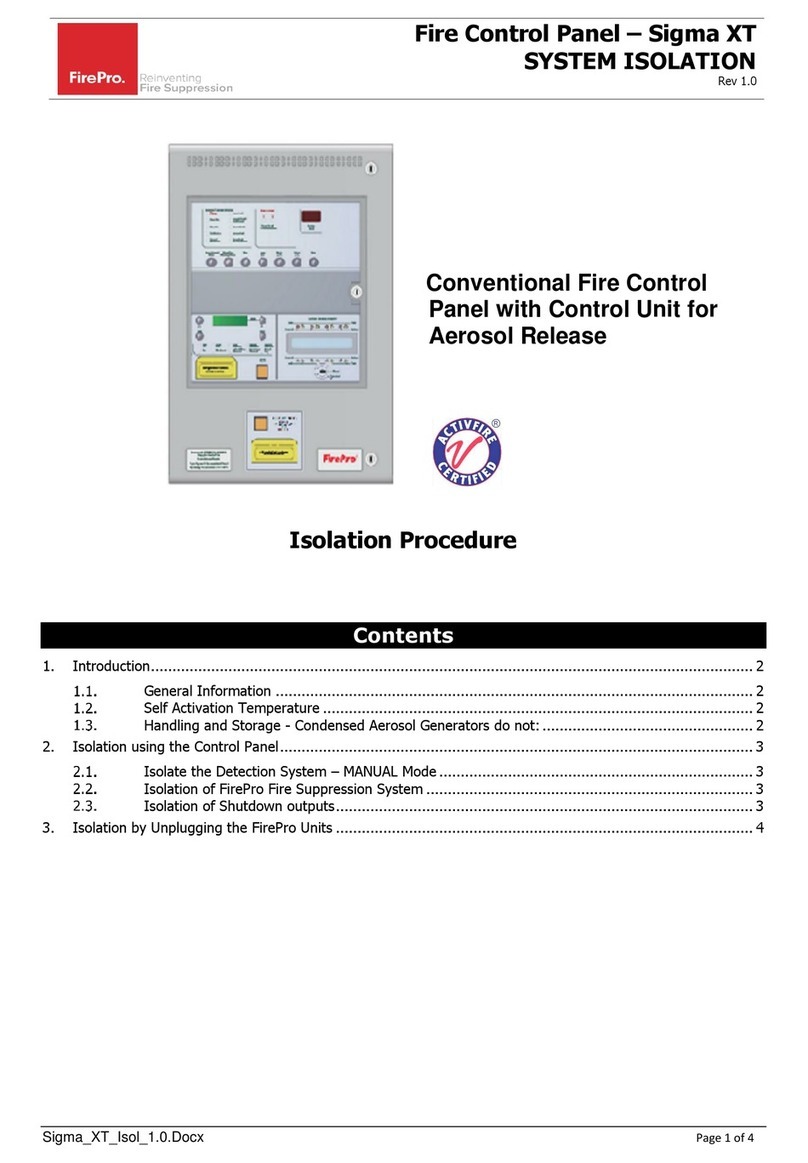
Fire Pro
Fire Pro Sigma XT Reference guide
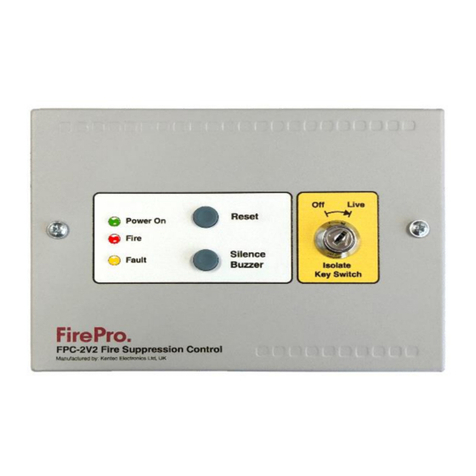
Fire Pro
Fire Pro FPC-2 User manual
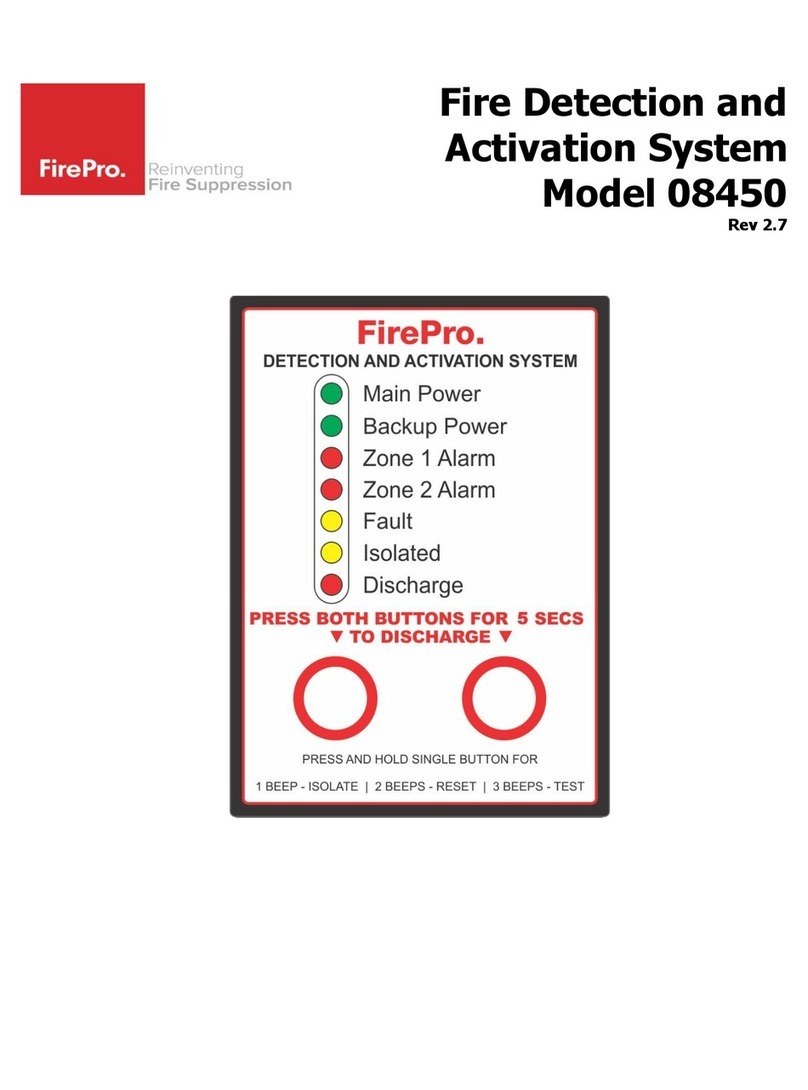
Fire Pro
Fire Pro FP-08450 User manual
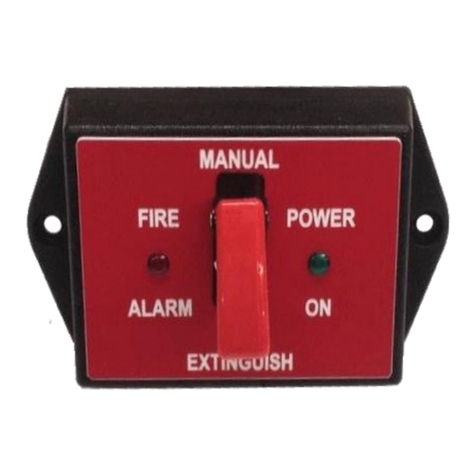
Fire Pro
Fire Pro 08100 User manual

Fire Pro
Fire Pro 08451 User manual
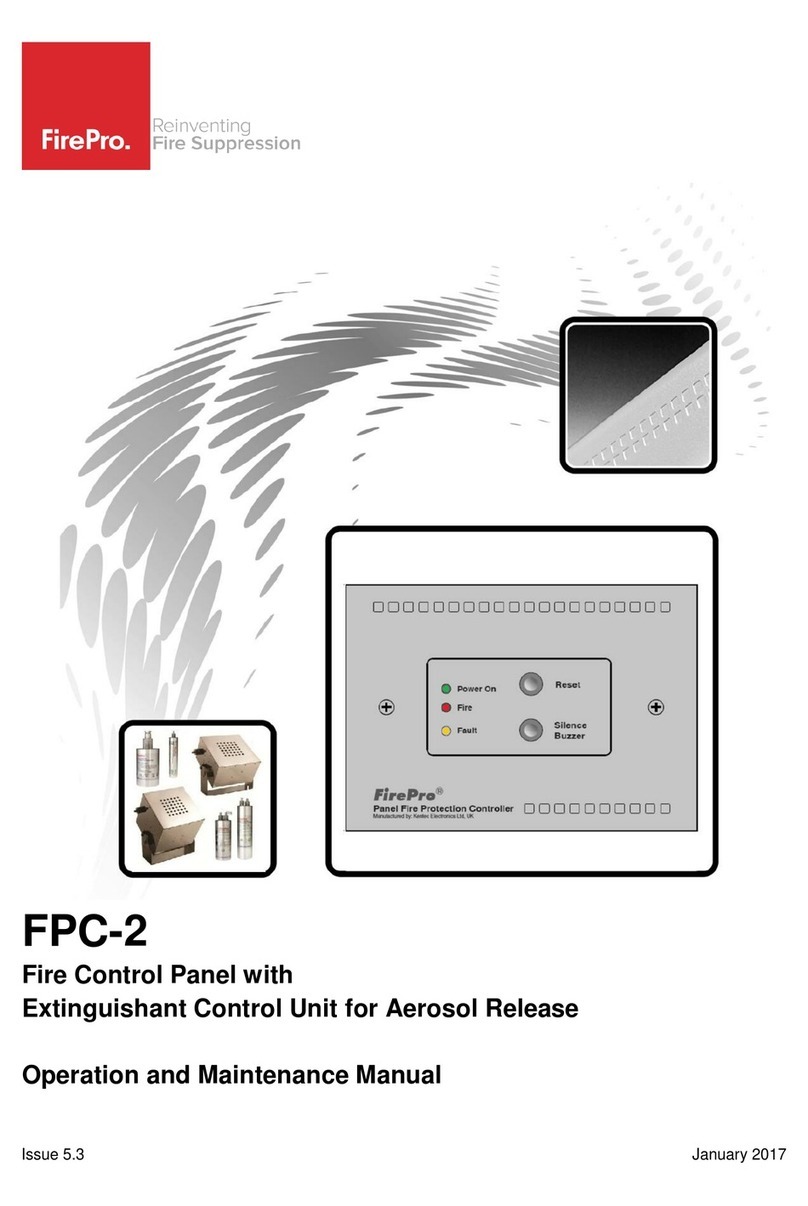
Fire Pro
Fire Pro FPC-2 User manual
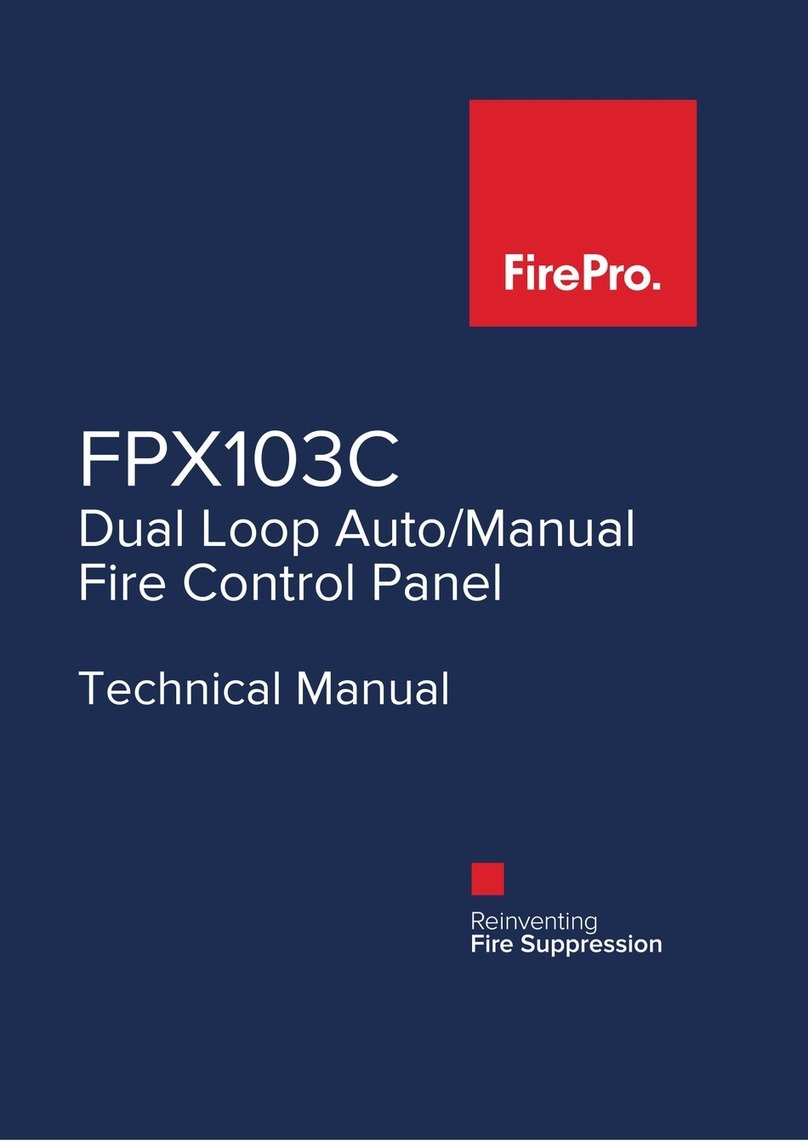
Fire Pro
Fire Pro FPX103C User manual

Fire Pro
Fire Pro FPC-2 User manual

Fire Pro
Fire Pro FP-22408 User manual
Popular Control Panel manuals by other brands

Mitsubishi Electric
Mitsubishi Electric GT1020 Series Startup guide
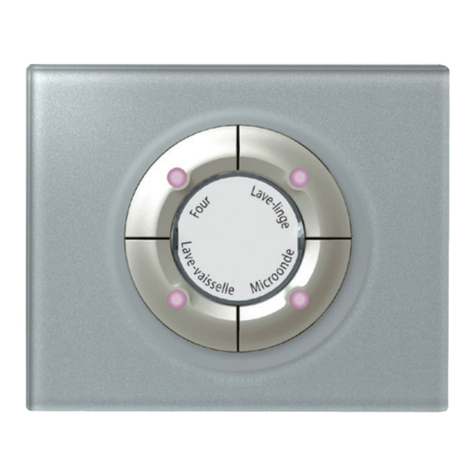
LEGRAND
LEGRAND 67206 user guide
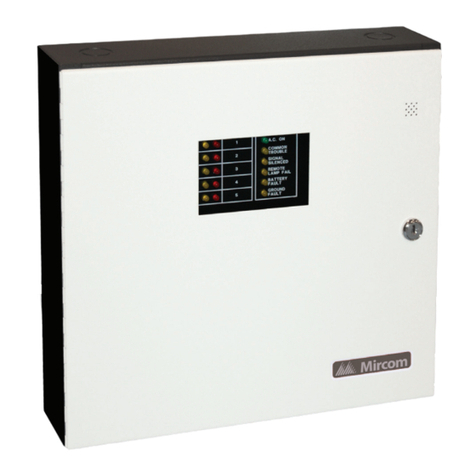
Mircom
Mircom FA-1025T Installation and operation manual
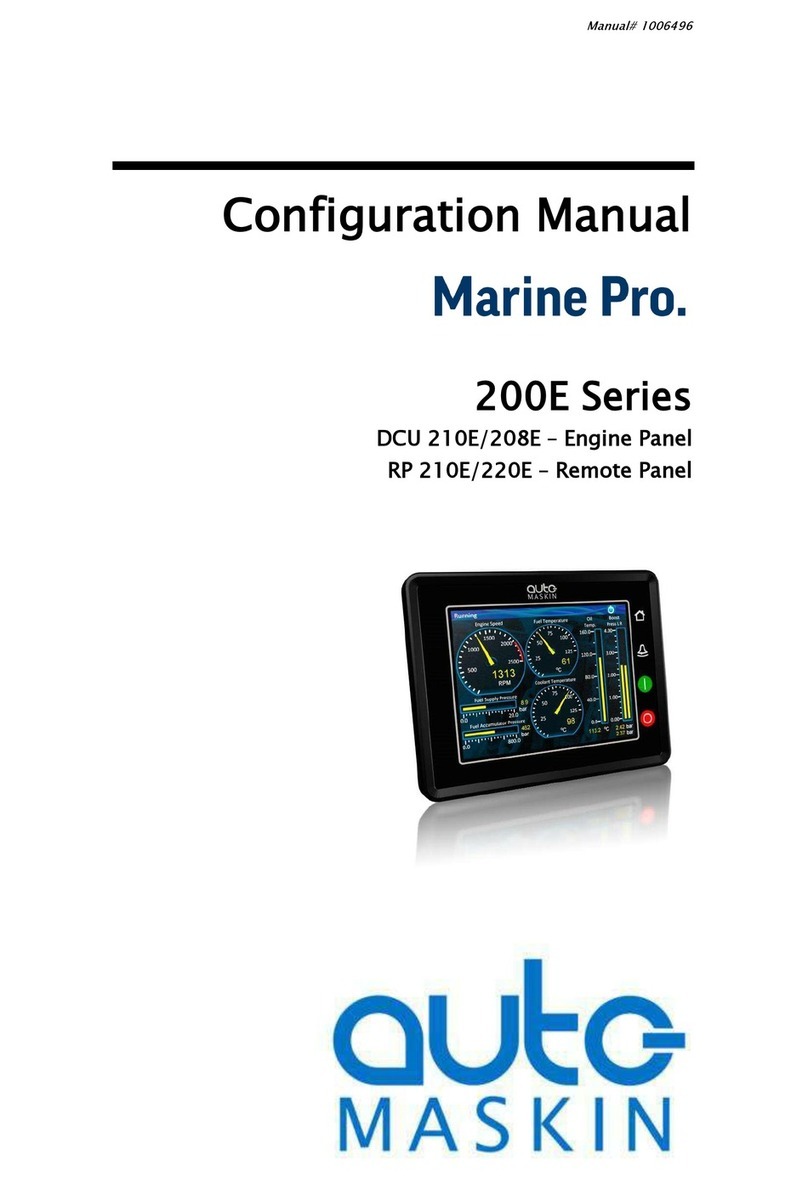
auto maskin
auto maskin Marine Pro 200E Series Configuration manual
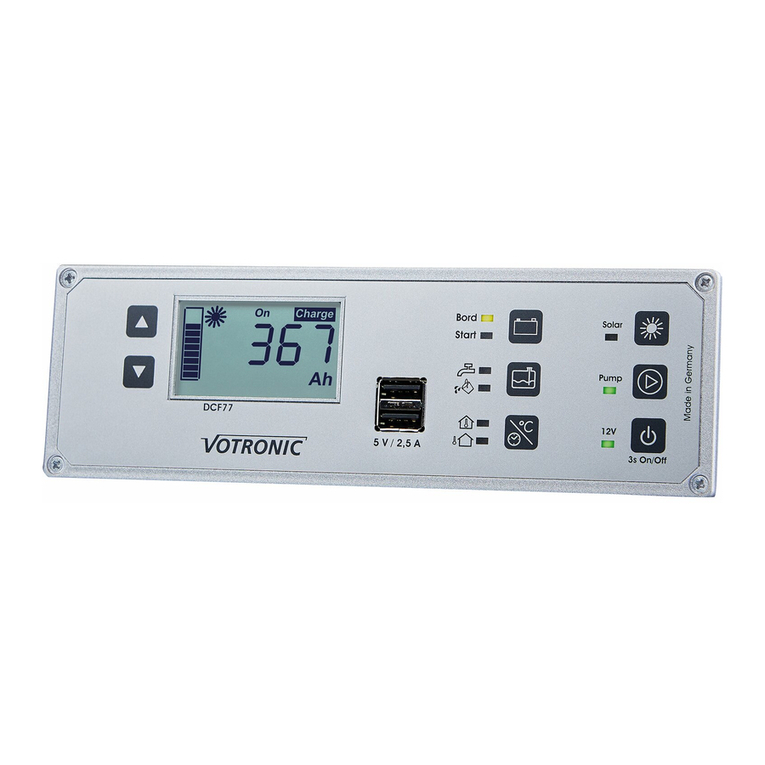
Votronic
Votronic VPC Jupiter 100 Installation and operating manual
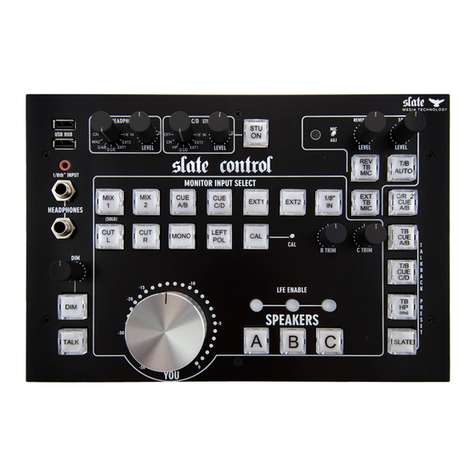
Slate
Slate Raven MTX2 manual
